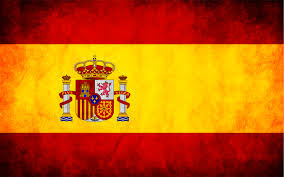Spanish Language
The Spanish language is the 3rd most spoken idiom in the world after Chinese and English. A significant part of the Spanish speakers is found in Latin America who together with those living in Spain, United States, Philippines and even Africa make up the 417 million Spanish speakers who are found worldwide. This data includes first as well as second language speakers.
History
The Spanish language development started 3000 years ago from Latin roots, which gives Spanish the state of romance language. The Latin influence is evident in vocabulary, including Germanic lemmas (in the 5th century BC the Visigoths invaded Spain) and words of Arabic origin (from 700 BC and for the subsequent 700 years the Muslims conquered Spain).
When in 1713 it was set up the “Real Academia”, the process of standardization of the language began. Academia was born to define what “pure” Spanish was and regulate the process of incorporating neologism and foreign words. Academia has always had a conservative attitude, rejecting international words or new lemmas. The result has been the creation of the “perfect” Spanish, a static form which with time has become more and more different from everyday language. It was only with the end of Franco’s dictatorship that the evolution of the language reached a turning-point: after more than thirty years of censure, it followed a revitalization of culture in general and of language in particular. Spoken Spanish became more colorful, and it incorporated neologism derived from technical and scientific advances. What is more, anglicism, which up to now had been forbidden, started to enter the language? The process of evolution of Spanish is still going on, making the language one in continuous evolution.
Dialects
When we talk about Spanish dialects, we are not considering Catalan, Basque and Galician, which, together with Castillano (or standard Spanish) are the three officially recognized languages of Spain. So, these are proper languages and not dialects.
The language spoken in the region of Castilla became the national standard in 1200, with a law issued by King Alfonso X. Thanks to this law, now it existed a universal form of Spanish, used in politics, education and administration. With time, the national standard has evolved in many variations in Spain and America and the phenomenon affected mainly spoken language. The intonation in America is quite different from the Spanish one. Some words are different: consider the 2nd person pronoun, that in Spain is “tú” while in Argentina is “vos”.
Literature
Spanish authors have contributed a great deal to the European literary scene.
The Renaissance was the Golden Age in literature. It counted with masterpieces as Cervantes’ “Don Quijote” and great playwrights as Lope de Vega, Tirso de Molina or Calderon de la Barca. Benito Perez Galdos introduced the realistic novel in the 19th century and the same period Machado and Garcia Lorca published their best poems. Miguel Unaumo was the leader of the “Generation of 98”, a group of writers who made an effort to bring new life to Spain’s cultural life. The Civil War caused many writers to be exiled, resulting in stasis in literary production. As soon as writers could go back to Spain, new names as Camilo Jose Cela emerged. One of the most read writers nowadays, Miguel Delibes moved the first steps in the literary scene after World War II. Finally, the post-Franco period was dominated by the novel of experimentation, which had in Mendoza and Juan Benet two of its most important protagonists.
Grammar and Slang
The strict rules of the Academia didn’t prevent Spanish from developing a quite extended Slang Language. Spanish’s romance origins make it a language full of inflexions for adjectives, verbs, and nouns. Verbs decline according to numerous tenses and include three modes, indicative, subjunctive and conditional. Spanish prepositions are not a simple list to be learned by heart. Any learner has undoubtedly been driven crazy by “por” and “para”: the first preposition indicates cause or reason, while “para” indicates purpose or destination. The difference is not so evident, and identifying all the possible causes would be a gorgeous task, this is why even those who no more are learners still make mistakes in the use of the two.
Spanish is a so-lively language that to appreciate it 100% it’s compulsory a trip there to have direct contact with culture and people. You will notice the great use of diminutives with nouns and adjectives, which are used in many ways not only to indicate size but also as a nice way of indicating affection or to make a wordless harsh. Have a look at the following examples:
niño — niñito (“small boy”—“little tiny boy”)
planta — plantita (“plant”—“little plant”)
vaso — vasito (“glass”—“little glass”)
Apart from diminutives, youngsters use a rich and colorful slang language, for instance:
– Menudo pájaro es ese: I wouldn’t trust him further than I can throw him.
– Más vale tarde que nunca: Better late than never.
– Está dicho y hecho: No sooner said than done.
– ¡Anda a bañarte! (Chile) Go away!
– ¡Pierde cuidado!: Don’t worry!
– Es broma: Just kidding.


Leave a Reply
You must be logged in to post a comment.